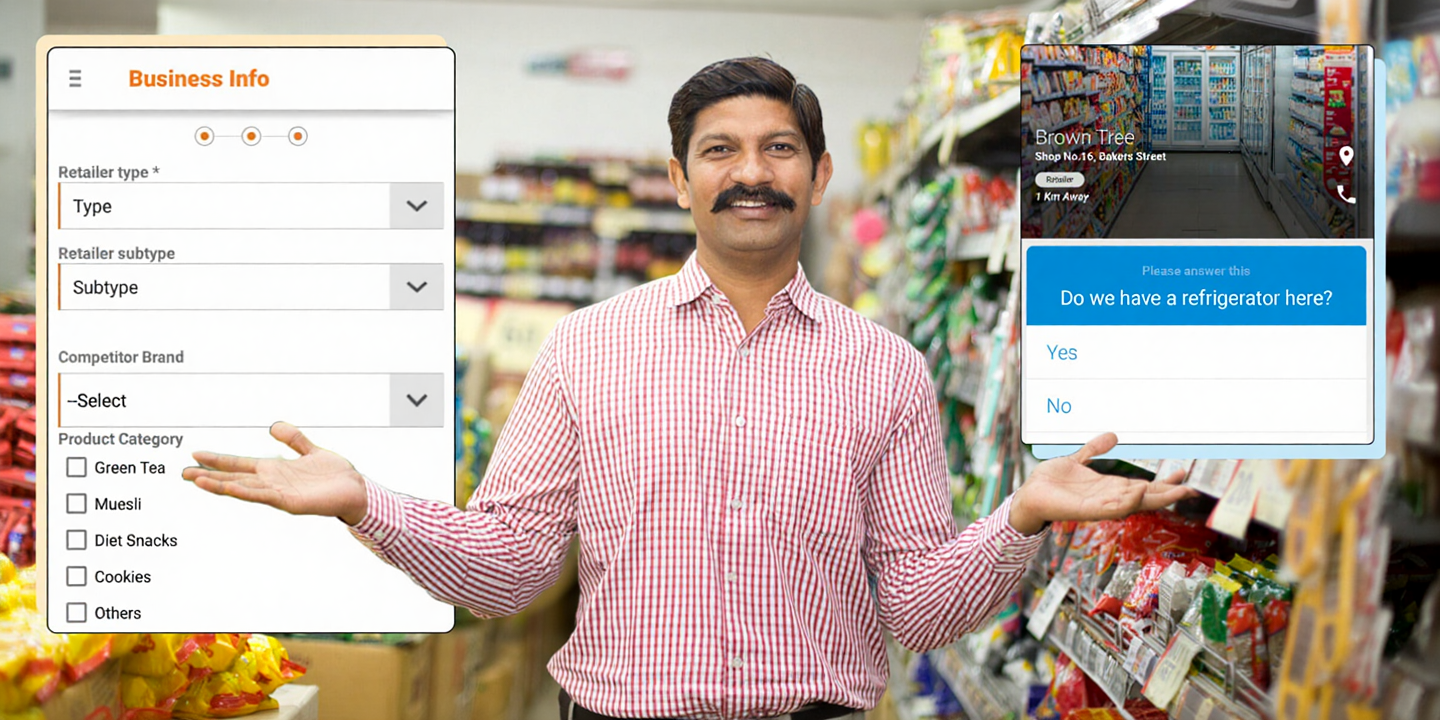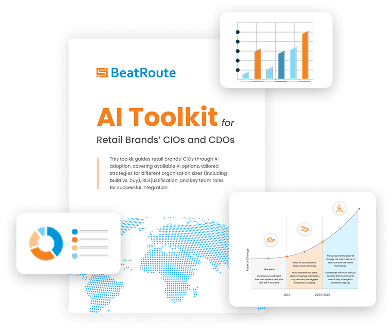How to Build a Multichannel Route to Market Strategy for Retail Brands

A multichannel route to market is a strategy that uses multiple distribution paths to maximize market reach and address diverse customer preferences. This approach recognizes that customers buy in different ways, some directly from the brand, others through distributors, and many online.
By offering these choices, you reduce risk and dependence on any single channel. The power of this strategy lies in seeing these channels as complementary, with each serving a specific purpose: direct sales handle key accounts, distributors cover smaller retailers efficiently, and digital platforms provide convenience for routine orders, all contributing to a stronger market presence
Quick Tip: BeatRoute helps retail brands coordinate activities across channels using a unified platform, ensuring consistent execution while maintaining channel-specific approaches.
Benefits of Multichannel Distribution for Retail Brands
Multichannel distribution delivers significant advantages that directly impact retail brand profitability and market position. Companies implementing comprehensive multichannel strategies report 18-25% improvements in market coverage and 15% reductions in per-customer acquisition costs.
Increased Market Reach and Coverage
You can serve different customer types more effectively. Direct sales work for large accounts, distributors handle smaller retailers efficiently, and digital channels capture tech-savvy buyers. This ensures competitors can’t exploit gaps in your market coverage.
Risk Reduction and Business Continuity
Relying on a single channel creates risk. If a distributor fails or a large buyer pauses orders, your revenue takes a hit. A multichannel RTM strategy protects you from this disruption.
Enhanced Customer Experience and Convenience
Multichannel route to market strategies meet customers where they prefer to buy, creating superior experiences that build loyalty. Retailers can start relationships through one channel and migrate to others as needs change.
Improved Data Collection and Market Intelligence
Multiple channels provide rich, diverse data. Direct sales teams capture intelligence and customer feedback while distributors report on market trends.
Cost Optimization Through Channel Specialization
Each channel can specialize in what it does best. This allows you to focus higher-cost direct sales on high-value accounts while using more efficient distributors and digital tools for routine transactions.
Competitive Differentiation and Market Barriers
Building a strong multichannel route to market network creates a significant barrier for competitors. The investment and expertise required to match your presence make it difficult for rivals to gain market share.
Types of Distribution Channels for Retail Brands
Distribution channels for retail brands come in different types. Each type offers unique benefits and serves different market segments. Let’s understand these channel types and how they help retail brands build the best multichannel route to market strategies:
Direct Sales Channels
What it is: Your brand sells directly to retailers.
Advantage: Provides maximum control over pricing and messaging.
Best for: Key accounts or complex products that require a close relationship.
Quick Tip: BeatRoute Sales Force Automation Software helps your retail brands manage complex account relationships more efficiently than traditional methods.
Distributor and Wholesaler Networks
What it is: Intermediaries who buy from you and sell to retailers(Indirect sales).
Advantage: Reduces your direct investment in logistics and sales teams.
Best for: Achieving broad market coverage, especially in fragmented markets.
Modern Trade Partnerships
What it is: Partnering with large retail chains and organized retailers.
Advantage: Provides access to high-traffic, high-volume opportunities.
Best for: Generating significant sales volume.
Van Sales and Direct Store Delivery (DSD)
What it is: Sales reps visit stores to take orders, deliver products, and provide support.
Advantage: Combines distribution with direct customer service, maintaining a personal touch.
Best for: Products needing frequent restocking or in-store support.
Quick Tip: BeatRoute’s van sales automation help brands maintain personal relationships while improving operational efficiency.
Hybrid and Partnership Models
What it is: Combining multiple channels (e.g., using direct sales for some accounts and distributors for others).
Advantage: Allows you to leverage the strengths of each channel for a unified approach.
Best for: A flexible and comprehensive strategy.
Representative Networks
What it is: Independent representatives who sell your products on commission in specific territories.
Advantage: Reduces your fixed costs while providing local market expertise.
Best for: Specialized or new markets.
Building Your Multichannel Strategy Framework
Creating an effective multichannel strategy requires systematic planning that aligns channel selection with business goals and market realities. Follow this framework to develop a coordinated approach that maximizes returns while avoiding common pitfalls.
Step 1: Market Segmentation and Channel Mapping
Analyze your customer base to identify different types of retailers based on their size, buying behavior, and needs.
Example: A brand identifies large grocery chains (who prefer direct relationships) and thousands of small, independent shops (who prefer working with a distributor).
Step 2: Channel Selection and Role Definition
Choose channels that work together and assign a specific role to each. This prevents internal conflict.
Example: Use direct sales teams to manage and grow key national accounts, while relying on distributors for broad coverage of local markets
Step 3: Performance Measurement and Optimization
Establish metrics to track how well each channel and the overall strategy is performing.
Example: Regularly review distributor sales growth, customer satisfaction scores from your direct sales team, and the cost per sale for your digital channels.
Step 4: Conflict Resolution and Governance
Create clear rules and a process for resolving conflicts between channels.
Example: Set guidelines that prevent a direct sales team from selling to a customer within a distributor’s assigned territory.
Step 5: Training and Support Programs
Provide training and resources to ensure all channel partners represent your brand consistently and effectively.
Example: Offer regular product training sessions and provide up-to-date marketing materials to your distributor networks and sales reps.
Implementation Roadmap of Multichannel Route to Market
Multichannel implementation requires careful sequencing and change management to avoid disrupting existing operations while building new capabilities. Successful retail brands use phased approaches that minimize risks while capturing multichannel benefits progressively.
Phase 1: Foundation Building
Establish the technology and data systems needed for a multichannel route to market.
Implement unified customer databases and integrated order management systems.
Ensure all systems can track performance and enable measurement across channels.
Phase 2: Channel Partner Development
- Recruit and onboard channel partners using a systematic selection process.
- Provide comprehensive training on products, processes, and brand standards.
- Focus on building strong relationships from the start to prevent future challenges.
Phase 3: Pilot Testing and Optimization
- Launch pilot programs in limited markets to test your strategies.
- Use the pilot results to refine processes and resolve any conflicts.
- Optimize performance before moving to a broader rollout to reduce risk.
Phase 4: Full Deployment and Scaling
- Roll out your proven multichannel route to market strategy across all target markets.
- Monitor performance closely during scaling to address any issues quickly.
- Focus on disciplined execution and continuous optimization for success.
Best Practices of Multichannel Route to Market for Success
Clear Communication
Keep all stakeholders aligned on goals and roles by holding regular meetings, using shared dashboards, and collaborative planning to prevent misunderstandings and conflicts.
Flexible Adaptation
Ensure your multichannel route to market can evolve with changing market conditions by building flexibility into channel agreements and technology systems to enable rapid adjustments.
Aprendizaje continuo
Drive ongoing improvement and identify new trends by using regular performance reviews, buyers feedback collection, and competitive analysis.
Conclusion and Next Steps
A well-executed multichannel route to market strategy transforms how retail brands reach buyers, reduce risks, and capture growth opportunities in competitive markets. The most successful companies combine strategic channel selection with platforms like BeatRoute which can help them manage Sales teams, Distributors and Retailers all under one unified platform and provide high configurability for retail brands unique RTM needs.
As consumer behaviors continue evolving and markets become more fragmented, multichannel capabilities become essential for sustainable competitive advantage.
Ready to simplify your multichannel route to market?
Reserve una demostración gratuita to see how BeatRoute’s unified platform can help you unlock an efficient multichannel route to market.
Preguntas frecuentes
What Is BeatRoute?
BeatRoute is a Goal-Driven AI platform for retail execution that unifies your entire ecosystem and guides everyone toward brand goals.
How can BeatRoute help in building a multi-channel RTM strategy?
BeatRoute helps retail brands coordinate activities across channels using a unified platform, ensuring consistent execution while maintaining channel-specific approaches.
Sobre el autor
-
Kanika Agrawal owns deep first-hand market experience ranging from global corporations to startups, where she has contributed to building and scaling solutions that drive measurable business impact. She possesses strong expertise in AI and focuses on translating its capabilities into real business value.
Utilice Goal-Driven AI para aumentar sus ventas al por menor, ¡hoy mismo!
Únase a empresas de más de 20 países que confían en BeatRoute, la plataforma AI dominante en todo el mundo para la automatización de la fuerza de ventas, ventas sobre el terreno, DMS y eB2B.
Últimos artículos
Aquí tiene los artículos, actualizaciones de plataformas, libros electrónicos e informes más impactantes para usted.


